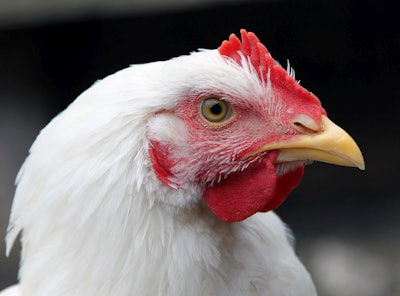
Over the past week, the Dutch government has announced the start of the first field trials to test the efficacy of vaccination to control highly pathogenic avian influenza (HPAI) in poultry.
Around 1,800 day-old chicks have received their first vaccination, reported the Dutch ministry of agriculture, nature and food quality earlier this week.
Collaborating with the ministry on these tests are Wageningen University & Research, Royal GD (Animal Health Service), and Utrecht University’s Faculty of Veterinary Medicine.
Previously, researchers at Wageningen Bioveterinary Research have demonstrated that two vector vaccines are effective against HPAI in lab-scale experiments. Under the current project, the birds have been divided into different experimental groups, and they will be reared on two farms. At pre-determined times over the coming months, they will be tested in the lab to assess the efficacy of the vaccination treatments. Poultry used in these trials will be destroyed, and not used for human consumption.
While first results are scheduled to be released in the second quarter of next year, the trial will continue for a total of around two years.
If successful, this initial field trial will be followed by testing on a larger scale. Next year, more farms will be involved in the testing, providing the indications for the vaccination are positive, and the European Union authorizes the next phase of the study.
As well as the health of the experimental birds, the trial will also examine the possible implications of vaccination on international trading in poultry products. Furthermore, a program will be developed for disease surveillance on farms where vaccination is carried out. Despite the administration of an effective vaccine, outbreaks can still occur, and the ministry says such a program will help to reduce the further spread of the HPAI virus.
Last but not least, the ministry stressed the importance of continued vigilance by poultry owners for signs of ill-health in their poultry, as well as maintaining hygiene and biosecurity measures.
Earlier this month, France’s agriculture minister confirmed that preparations were in place to begin HPAI vaccination of poultry flocks. Top priority for the vaccination program will be commercial ducks across the country.
Europe-wide wild bird monitoring tool
As part of its strategy to support European Union (EU) countries with HPAI preparedness, the European Food Safety Authority (EFSA) has recently held two online events.
These aimed to communicate the agency’s latest activities in the development and implementation of early warning systems. Once in place, they will allow EU member states to better tailor their outbreak response and management to the disease situation at the time.
In November, EFSA plans to call for the setting up of an active HPAI surveillance network across the EU. It aims to guide member states on building capacity in their own surveillance systems and to develop partnerships with adjacent states in order to improve wild bird monitoring across the bloc.
At a second event, EFSA introduced the Bird Flu Radar. This is an early warning system based on spatial-temporal risk assessment.
U.K. confirms new outbreaks in poultry
Last week, the United Kingdom (U.K.) government reported three further HPAI outbreaks in poultry flocks linked to the H5N1 virus serotype.
In the meantime, further details about these outbreaks have been passed by the veterinary authority to the World Organisation for Animal Health (WOAH).
The two outbreaks in England around the start of this month were in pheasants — in Uttoxeter (in the English Midlands), and Warrington (in the northwest English county of Cheshire). In flocks of 1,300 and 1,750 birds, these were likely being reared for game shooting. Affected by the third outbreak were 221,000 laying/rearing chickens at a farm near Peterhead in the northeast of the Scottish mainland.
Towards the end of last week, two further suspected outbreaks in Scottish poultry were confirmed as linked to the H5N1 HPAI virus. These involved flocks of unspecified size and type — one of each of the Shetland Islands and Isle of Lewis.
They bring to 206 the total confirmed outbreaks among U.K. poultry since October of 2022, according to the agriculture department, Defra.
No other countries have notified WOAH about new HPAI outbreaks on poultry farms over the past week.
Concerning captive birds — backyard poultry, zoos and similar premises — only Belgium and Norway have lodged updated reports with WOAH. Small numbers of non-poultry birds have been added to two previous outbreaks in Belgium, and another at a Norwegian zoo.
European states report new HPAI cases in wild birds
Over the past week, the animal health agencies of Belgium, Finland, Germany, the Republic of Ireland, Italy, and the U.K. have each registered with WOAH between one and four additional cases of wild birds testing positive for the H5N1 HPAI virus.
Furthermore, similar additional outbreaks in this population have been reported by France, The Netherlands, and Sweden. This is according to a partial update from the Animal Disease Information System of the European Commission. The regular report from the EC has not been updated since September 8.
Finland confirms more infections in non-avian species
At the end of June, first infections with the H5N1 HPAI virus were detected on Finnish fur farms.
To WOAH the veterinary authority has registered no new outbreaks over the past week. However, a further 446 Artic foxes have died and 3,150 more culled at two of the previously affected farms.
As reported last week, first cases have been detected in wild animals in the same area of Finland as the fur farms. Testing positive for the virus have been one wild red fox, and an otter.

















